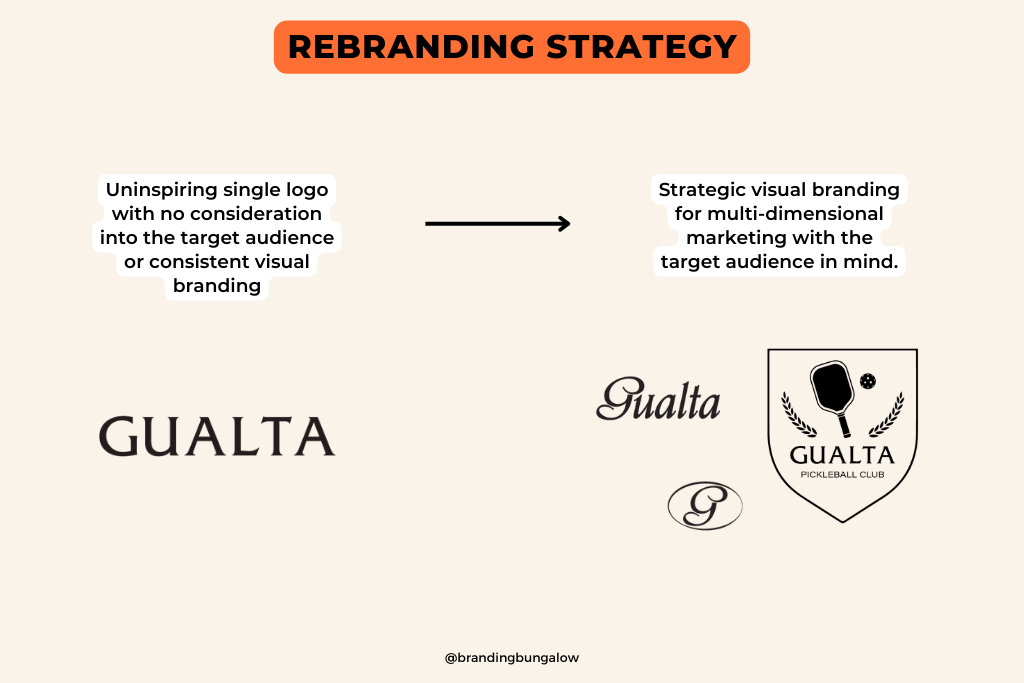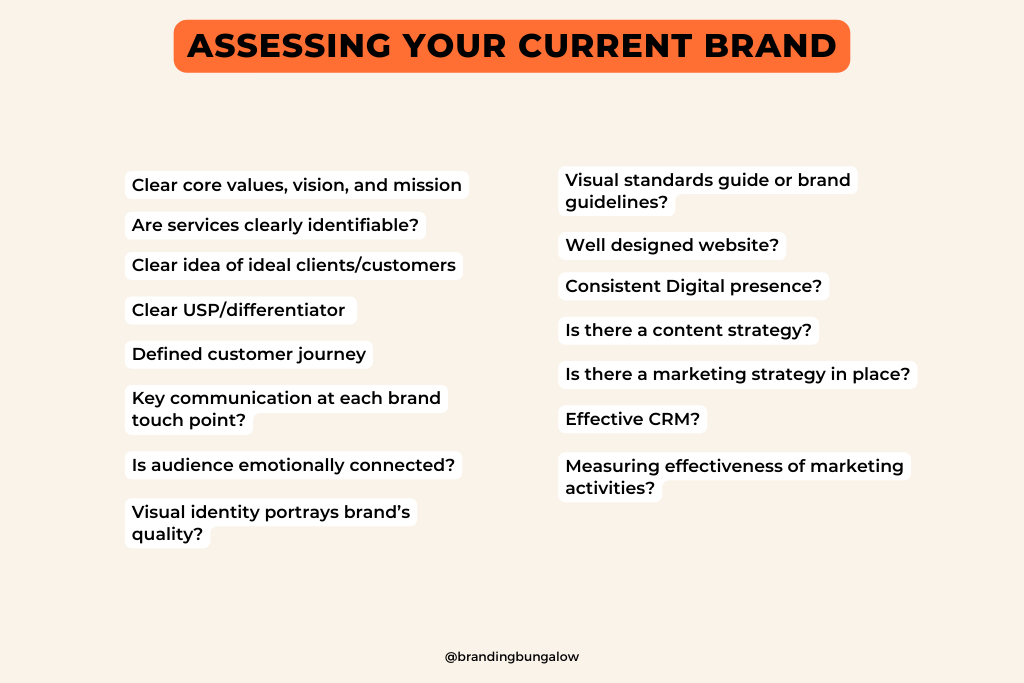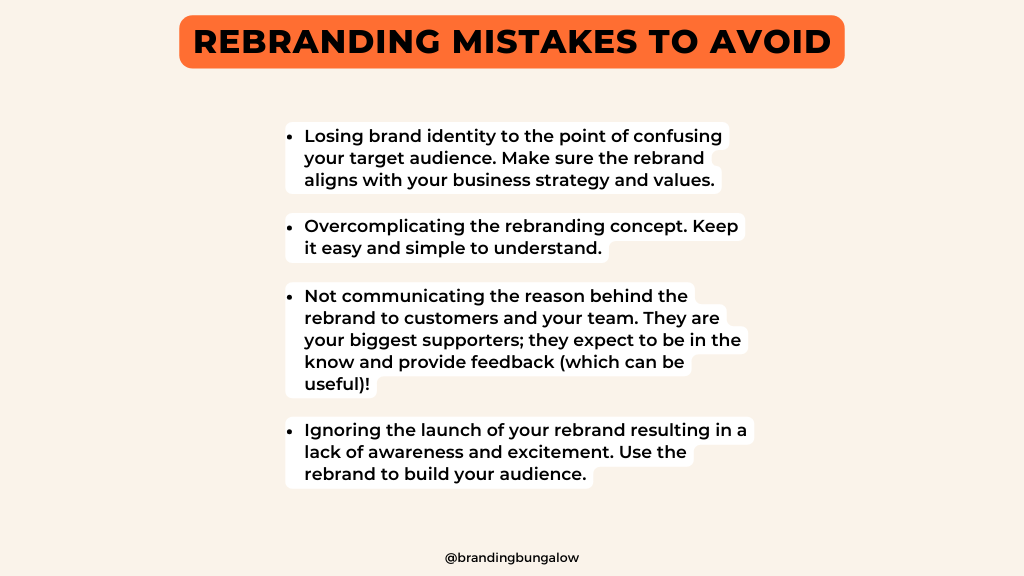The Essential Guide to Mastering Rebranding Strategies
Rebranding is a powerful tool that can breathe new life into a business, attract new customers, and redefine objectives. However, it’s a complex process that requires careful planning, execution, and ongoing management to ensure success. But what exactly is involved in a rebrand, and how can you master the art of rebranding strategies?
In this guide, we’ll take you through the essential steps of rebranding. You will understand the need for rebranding to evaluating the results of your efforts. We’ll also delve into the key elements of a successful rebrand, including logo redesign, brand messaging, and visual identity. By the end of this guide, you’ll have a clear understanding of the rebranding process. You will also have the tools and techniques you need to execute a successful rebrand.
So, whether you’re considering a complete brand overhaul or just looking to refresh your logo and messaging, read on to discover the essential guide to mastering rebranding strategies.
Key Takeaways
- Rebranding is an important process to help improve a business’s strategy and image.
- Creating a successful rebrand requires research, planning, logo redesign & refining brand messaging for customer engagement & loyalty.
- Evaluating the results helps ensure success by measuring key metrics and gathering feedback from customers.
Understanding the Need for Rebranding

Rebranding is a critical process that can boost a business’s strategy, enhance brand awareness efforts, and redefine objectives. It is the meeting point between your business strategy and your marketing strategy. However, launching into rebranding should be underpinned by valid reasons and a well-defined strategy. A hasty rebrand without proper planning can lead to a loss of brand identity, negative brand recognition, and even a decline in brand loyalty and equity.
Some common reasons for rebranding include:
- A change in the company’s mission
- A shift in the target market
- A merger or acquisition
- A need to refresh the brand’s image to stay relevant in a rapidly evolving market
Evaluating the strengths and weaknesses of your current brand and pinpointing areas of improvement is vital for a successful rebrand. This may involve a complete brand overhaul, including a new visual identity, brand logo, brand reputation, and brand slogan, or it may be a more subtle brand refresh that maintains the essence of the existing brand while updating specific elements.
Appreciating the necessity for rebranding and setting clear objectives will enable you to build a strong brand. You’re goal is to create a brand that engages your target audience, fostering customer loyalty and enhancing your company’s reputation.
Benefits of a Successful Rebrand

A well-executed rebrand can lead to significant benefits for your business. Some advantages of a successful rebranding strategy include:
- Increased brand recognition
- Better market positioning
- Enhanced customer loyalty
- Creating a consistent and robust brand that stands out in the market
- Appealing to your target audience
One of the most critical aspects of a successful rebrand is maintaining consistency across all brand elements. This includes your brand logo, visual identity, and brand messaging. Ensuring an understanding in all aspects of your rebrand is essential. You also want your rebrand to be in alignment with your brand’s mission, vision, and values. These steps will pave the way for a powerful and memorable brand that resonates with your target audience.
Ultimately, the benefits of a successful rebrand go beyond simply updating your brand’s look and feel. A well-planned rebranding strategy can lead to increased brand equity, improved customer engagement, and a more robust company reputation, setting your business up for long-term success.
Assessing Your Current Brand

Before initiating a rebrand, it’s important to assess your current brand identity to identify its strengths, weaknesses, and potential areas of enhancement. This may involve revisiting your company’s mission, vision, and values to ensure that your current brand aligns with your business strategy. If your company is changing direction, it’s crucial to reevaluate your brand identity and make necessary adjustments to reflect your new goals.
Assessing your current brand also involves conducting research and analysis to better understand your target audience, market trends, and competition. This information can help you identify opportunities for improvement and ensure your rebrand resonates with your desired market segment. Focus groups, customer surveys, and social media monitoring are essential tools for gathering valuable feedback from your existing customers and understanding their needs, preferences, and perceptions of your brand.
A comprehensive assessment of your current brand and pinpointing areas for improvement will enable you to formulate a more effective rebranding strategy, which addresses your target audience’s needs and aligns with your company’s mission, vision, and values.
Developing a Rebranding Strategy
Developing a successful rebranding strategy involves thorough research, defining new objectives, and aligning with company values. It’s critical to create a comprehensive rebranding plan that takes into account your existing brand elements and ensures that any changes are consistent with the aspects of your brand that remain unchanged. This will help you maintain brand continuity and avoid confusing or alienating your existing customers.
Your rebranding strategy should be guided by your company’s vision, mission, and values. This will help ensure that your new brand identity remains authentic and credible while reflecting the changes in your business strategy. Additionally, involving key stakeholders in the rebranding process, such as employees, customers, and investors, can provide valuable insights and contribute to the overall success of your rebranding efforts.
Developing a thoroughly researched, carefully constructed rebranding strategy will effectively update your brand identity, preserve the essence of your existing brand, and result in a more potent brand strategy that resonates with your target audience.
Research and Analysis
Conducting in-depth research on your target audience, market trends, and competition is a crucial step in the rebranding process. This research will help inform your rebranding strategy and ensure that your new brand identity resonates with your desired market segment. Understanding the preferences, needs, and perceptions of your target audience will enable you to create a brand identity that appeals to them and sets you apart from the competition.
Analyzing your current brand’s performance in the market is essential for identifying areas of improvement and opportunities for growth. This may involve:
- Examining your brand’s market share
- Assessing customer loyalty and brand sentiment
- Evaluating the performance of your marketing efforts
- Analyzing competitors’ strategies
By gathering and analyzing this data, you can make informed decisions about the direction of your rebrand and the specific changes needed to achieve your desired outcomes.
In addition to researching your target audience and market trends, it’s important to consider the feedback and opinions of your existing customers. Engaging with your customers through focus groups, surveys, and social media can provide valuable insights into what makes your brand unique and special, as well as areas for improvement. This information can help guide your rebranding efforts and ensure that your new brand identity remains authentic, relevant, and appealing to your target audience.
Defining New Objectives
Clearly outlining the goals and objectives of your rebrand is essential for ensuring a focused and effective approach. Your objectives may include updating your brand’s mission, vision, and values to align with your new business strategy, or repositioning your brand in the market to appeal to a new audience. Defining these objectives serves as a roadmap for your rebranding efforts, ensuring that your new brand identity mirrors your company’s direction and goals accurately.
When defining your rebranding objectives, it’s important to consider the needs and preferences of your target audience. Your new brand should:
- Resonate with your target market
- Effectively communicate the unique value proposition of your products or services
- Involve updating your brand’s messaging, visual identity, and marketing materials
- Create a cohesive and consistent brand experience that appeals to your target audience
Clearly defining your rebranding objectives and aligning them with your company’s mission paves the way for a focused, effective rebranding strategy that promotes customer engagement, brand loyalty, and overall business success.
Aligning with Company Values
Ensuring that your rebranding efforts align with your company’s core values and mission is critical for maintaining authenticity and credibility. Your new brand identity should accurately reflect your company’s values and resonate with your target audience, while also distinguishing your brand from competitors in the market. Aligning your rebranding efforts with your company’s values enables you to build a consistent, impactful brand identity, resulting in increased brand loyalty and customer satisfaction.
When updating your brand’s visual identity, messaging, and marketing materials, it’s important to consider how these changes align with your company’s mission, vision, and values. This may involve:
- Revisiting your company’s values and ensuring that they are accurately reflected in your new brand elements
- Maintaining a strong connection between your rebranding efforts and your company’s core values
- Ensuring that your new brand identity remains authentic, credible, and appealing to your target audience
By following these steps, you can ensure that your rebranding efforts are successful and aligned with your company’s values.
Ultimately, harmonizing your rebranding efforts with your company’s values is key to crafting a strong, memorable brand that stands out in the market, fuels customer engagement, and boosts your overall business success.
Key Elements of a Successful Rebrand

A successful rebrand involves several key elements, including logo redesign, brand messaging, and updating your visual identity. These components are crucial for creating a cohesive and modern brand identity that resonates with your target audience and distinguishes your brand from competitors in the market.
Logo redesign is an essential aspect of a successful rebrand, as your logo is often the first touchpoint between your brand and your target audience. A well-designed logo should be easily recognizable, adaptable, and reflective of your updated brand identity. When redesigning your logo, consider factors such as color psychology, design trends, and the preferences of your target audience to create a logo that effectively communicates your brand’s values and personality.
Brand messaging is another crucial element of a successful rebrand, as it helps to communicate your company’s mission, vision, and values to your target audience. By refining your brand messaging, you can ensure that your new brand identity clearly conveys your company’s unique value proposition and resonates with your target market. This may involve updating your brand’s slogan, marketing materials, and social media content to better align with your updated brand identity and values.
Finally, updating your brand’s visual identity is essential for creating a cohesive and modern look that appeals to your target audience. This may involve updating elements such as colors, fonts, and imagery to create a consistent and impactful brand experience across all touchpoints. By carefully considering and updating these key elements, you can create a successful rebrand that drives customer engagement, brand loyalty, and overall business success.
Logo Redesign
Creating a new logo that reflects your updated brand identity and resonates with your target audience is a critical aspect of a successful rebrand. Your logo serves as a visual representation of your brand and plays an essential role in brand recognition and loyalty. When redesigning your logo, it’s important to consider factors such as color psychology, design trends, and the preferences of your target audience to create a logo that effectively communicates your brand’s values and personality.
A well-designed logo should be:
- Easily recognizable
- Adaptable
- Reflective of your updated brand identity and brand image
- In line with your brand guidelines
- Suitable for use across various mediums, including print, digital, and social media
When redesigning your logo, consider factors such as simplicity, impact, adaptability, and longevity to create a logo that stands the test of time and effectively communicates your brand’s values and personality.
Investing time and effort into redesigning your logo allows you to:
- Create a compelling visual symbol that stands for your brand
- Resonate with your target audience
- Significantly impact your brand’s success
- Drive customer engagement
- Build brand loyalty
- Improve overall business performance.
Brand Messaging
Revise your brand messaging to communicate your new mission, vision, and values effectively. As your company evolves and your objectives shift, it’s essential to update your brand messaging to ensure it accurately reflects your updated brand identity and resonates with your target audience.
Consider the needs and preferences of your target audience when updating your brand messaging. Your new brand messaging should effectively communicate your company’s unique value proposition and appeal to your desired market segment. This may involve updating your brand’s slogan, marketing materials, and social media content to better align with your updated brand identity and values.
Refining your brand messaging helps in crafting a clear, consistent brand narrative that captivates your target audience and fosters customer loyalty. This will not only help to strengthen your brand’s position in the market but also contribute to your overall business success.
Visual Identity
Updating your brand’s visual identity is crucial for creating a cohesive and modern look that appeals to your target audience. Your visual identity includes elements such as colors, fonts, and imagery that work together to create a consistent and impactful brand experience across all touchpoints.
When updating your visual identity, it’s important to consider factors such as color psychology, design trends, and the preferences of your target audience to create a look that effectively communicates your brand’s values and personality. This may involve updating elements such as your brand’s color palette, typography, and visual elements to create a consistent and modern look that resonates with your target audience.
Thoughtfully assessing and updating your company’s brand identity enables the creation of a potent brand experience that captivates your target audience, fostering customer loyalty, brand recognition, and overall business success.
Managing the Rebranding Process

Carefully planning and implementing your rebranding strategy is essential for ensuring a successful outcome. Here are some key steps to follow:
- Involve key stakeholders in the process.
- Develop a detailed project plan and timeline for your rebranding efforts.
- Manage the rebranding process effectively.
- Avoid potential pitfalls that could harm your brand’s reputation and overall business performance.
By following these steps, you can increase the chances of a successful rebranding.
Launching your rebrand is another critical aspect of managing the rebranding process. A well-planned launch campaign can help to introduce your new brand identity to the world. It is also important to generate excitement among your target audience. This may involve creating engaging marketing materials, hosting events, and leveraging social media to share your new brand identity.
Finally, it’s essential to evaluate the results of your rebranding efforts to measure the impact on brand awareness, customer loyalty, and overall business performance. This may involve tracking metrics such as brand sentiment, market share, and customer engagement. By carefully managing the rebranding process and evaluating the results, you can ensure a successful outcome that drives customer engagement, brand loyalty, and overall business success.
Planning and Implementation
Developing a detailed project plan and timeline for your rebranding efforts is essential for ensuring a successful outcome. This plan should outline the specific steps and milestones involved in the rebranding process. Also consider the resources and stakeholders required for each step. Creating a comprehensive project plan ensures all aspects of your rebrand are accomplished timely and within budget.
Involving key stakeholders in the rebranding process is crucial for gaining valuable insights. This may include engaging:
- Employees
- Customers
- Investors
- Other stakeholders
By involving stakeholders in the rebranding process, you can ensure that your new brand identity accurately reflects the needs and preferences of your target audience and remains authentic and credible.
Careful planning and implementation of your rebranding strategy ensure that your new brand identity is effectively conveyed to your target audience, promoting customer engagement, brand loyalty, and overall business success.
Launching the Rebrand
Executing a well-planned marketing strategy is essential for introducing your new brand identity to the world and generating excitement among your target audience. Your launch campaign should include:
- Marketing materials such as press releases, brochures, and advertisements
- Events such as launch parties, product demonstrations, or industry conferences
- Social media content to engage with your audience and share the story behind your rebrand
By utilizing a mix of these strategies, you can effectively communicate your new brand identity and create buzz around your rebrand.
When planning your rebrand launch, it’s important to consider the needs and preferences of your existing customers, as well as your new target audience. This may involve:
- Creating tailored marketing materials and messaging that resonate with both groups
- Ensuring a smooth transition from your old brand identity to your new one
- Careful planning and execution of your rebrand launch
- Mitigating customer confusion
- Securing a positive reception for your new brand identity
Additionally, tracking the success of your rebrand launch is crucial for evaluating the impact of your rebranding efforts on brand awareness, customer loyalty, and overall business performance. This may involve monitoring metrics such as brand sentiment, social media engagement, and website traffic to assess the effectiveness of your launch campaign and identify areas for improvement.
Evaluating the Results
Measuring the impact of your rebrand on brand awareness, customer loyalty, and overall business performance is essential for ensuring a successful outcome. By tracking key metrics and gathering feedback from your target audience, you can evaluate the success of your rebranding efforts and identify areas for improvement.
Some key metrics to track when evaluating the results of your rebrand include brand sentiment, market share, and customer engagement. These metrics can help you assess the effectiveness of your rebranding efforts and determine whether your new brand identity is resonating with your target audience. Additionally, gathering feedback from your existing customers and conducting focus groups can provide valuable insights into the success of your rebrand and help you identify areas for improvement.
Careful evaluation of your rebranding efforts’ results ensures that your new brand identity effectively conveys your company’s mission, vision, and values, thereby driving customer engagement, brand loyalty, and overall business success.
Rebranding Success Stories and Lessons Learned
Learning from successful rebranding examples, such as Chobani, Dropbox, and Airbnb, can provide valuable insights and inspiration for your own rebranding strategy. These companies successfully navigated the rebranding process, resulting in:
- Stronger brand identities
- Resonance with their target audiences
- Increased customer engagement
- Enhanced brand loyalty
- Overall business success
Chobani, for example, underwent a rebranding process that focused on health and nutrition, aligning their brand identity with their mission to provide wholesome, natural foods to consumers. Dropbox, on the other hand, rebranded as a workspace that brings teams and ideas together, updating their internal mission and designing a cleaner and simpler logo. Airbnb’s rebranding process involved extensive research and a focus on community and belonging, resulting in the creation of the Bélo logo, which has become an iconic symbol of their brand.
Examining these successful rebranding examples and understanding the key success factors can guide your own rebranding strategy, ensuring a successful outcome that promotes customer engagement, brand loyalty, and overall business success.
Common Rebranding Mistakes to Avoid

When embarking on a rebranding process, it’s essential to be aware of potential pitfalls and common mistakes to avoid. Losing your brand identity, overcomplicating the concept, or ignoring the launch are just a few of the mistakes that can hinder the success of your rebranding efforts.
A loss of brand identity during a rebrand can sow confusion among your target audience, and result in diminished brand loyalty and equity. To avoid this mistake, ensure that your new brand identity remains authentic and credible while reflecting the changes in your business strategy. Additionally, avoid overcomplicating the rebranding concept. Here are some tips to keep in mind:
- Make sure your new brand identity aligns with your business strategy and values.
- Keep the rebranding concept simple and easy to understand.
- Communicate the reasons behind the rebrand to your customers and stakeholders.
- Provide clear and consistent messaging about the changes in your brand identity.
- Engage with your audience and gather feedback to ensure a smooth transition.
By following these tips, you can avoid confusion and maintain a strong brand identity during a rebrand.
Lastly, ignoring the launch of your rebrand can result in a lack of awareness and excitement among your target audience. Be sure to execute a carefully planned launch campaign that effectively communicates your new brand identity and stirs interest among your target audience. By avoiding these common rebranding mistakes, you can ensure a successful outcome that drives customer engagement, brand loyalty, and overall business success.
Summary
In conclusion, mastering rebranding strategies is essential for businesses looking to refresh their brand identity, attract new customers, and redefine their objectives. By carefully planning and executing the rebranding process, involving key stakeholders, and learning from successful rebranding examples, you can create a powerful new brand identity that resonates with your target audience and drives customer engagement, brand loyalty, and overall business success.
Remember to evaluate your current brand, develop a clear rebranding strategy, and avoid common rebranding mistakes. By doing so, you’ll be able to create a memorable and impactful brand that stands out in the market and scale long-term success.
Frequently Asked Questions
What is the purpose of rebranding?
Rebranding is a market strategy of creating a new identity for a brand in order to influence customers’ perception. Many brands will also want to make it more modern and relevant.
How do you rebrand successfully?
Successful rebranding requires establishing a clear business reason, researching the firm and its target clients, using positioning and messaging to capture the brand strategy, rebuilding the brand identity, reconsidering the slogan, tracking brand sentiment, and planning a successful launch.
What are some rebranding strategies?
Rebranding is a strategic process that includes updating a company’s name, logo, packaging, website, and marketing materials to better reflect its goals and target audience. It involves creating a 5-step rebranding campaign to accomplish this objective.
What are some common reasons for rebranding?
Rebranding is often necessary in order to stay competitive, due to a change in mission, target audience, merger, or acquisition. It can also be used to freshen up the company’s image and keep up with modern trends.
How can I evaluate the success of my rebranding efforts?
Evaluate your rebranding success by tracking brand sentiment, market share, customer engagement, and gathering feedback from your target audience.
Recent Blog Entries
Discounts to Dubsado CRM, Helcim Payment Processing and...
Brand audits can save your business' sinking marketing ship.
What's happening to Coke and what you can learn from it.
Shop Products
Create a personalize brand board by taking elements from our 3 signature brand board templates.